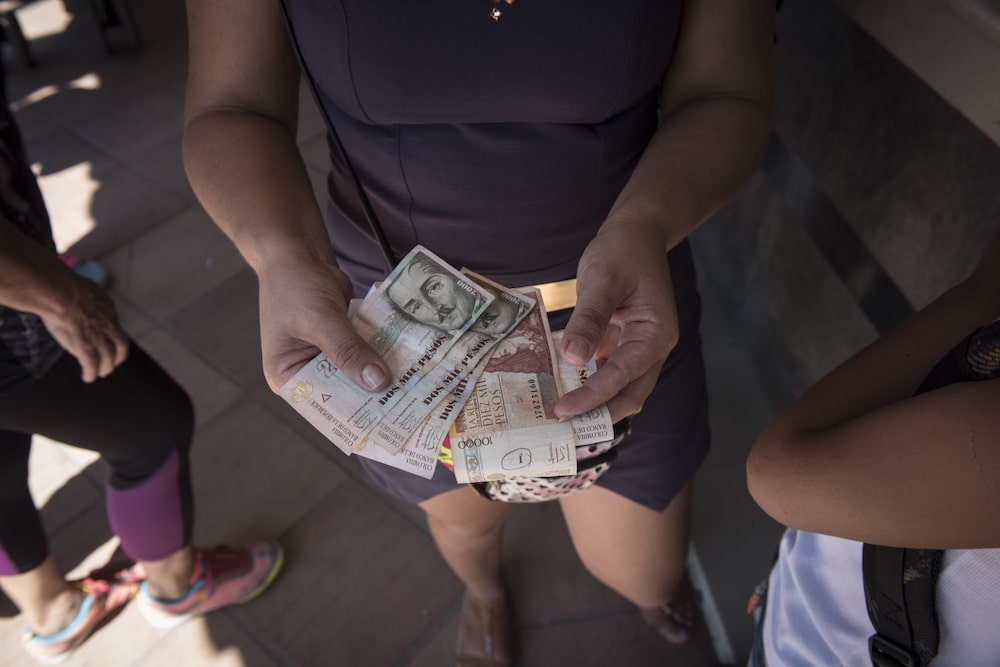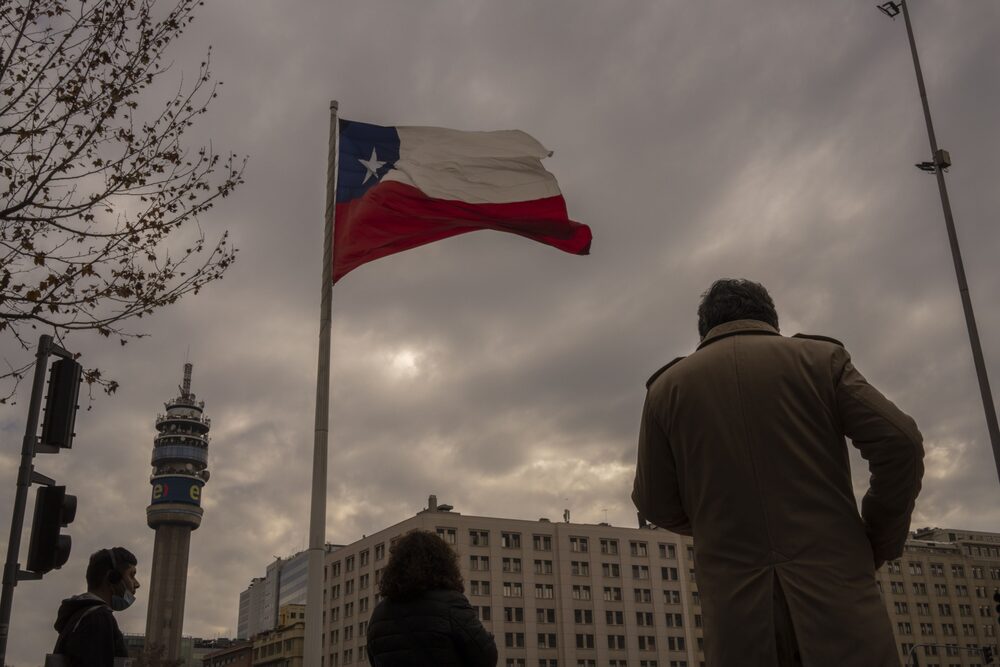Bloomberg Línea — Despite the job recovery in Latin American countries in 2021 and their economic rebound, real wages in the region fell by 6.8% last year compared to where they were in 2019, according to a recent report by the International Labor Organization (ILO) and the Economic Commission for Latin America and the Caribbean (ECLAC).
On average, the region’s economies grew by 6.6% and employment recovered to a rate of 6.8% in 2021, but the rapid growth of inflation caused workers to lose purchasing power, especially those who only access a minimum wage.
Even today, inflation continues to hit pockets, despite the fact that different countries have raised the minimum wage at least once and others have adjusted it several times over the past year.
Bloomberg Línea contrasted the minimum wages in force in Latin American countries for the months of January and August 2022, and calculated the real wage of each country against the accumulated inflation in the year to August, that is, the present value of each minimum wage with the discount rate, which in this case is the consumer price index (CPI).
How real minimum wages moved in 2022
How inflation affects pockets differs from country to country, although in countries such as Argentina and Venezuela the pressure on prices is the strongest, with the highest inflation in the region and wages that have fallen by between 30% and 50%.
Meanwhile, most Latin American countries have seen a less drastic fall in real wages, of between 5% and 9%, when their cumulative inflation to August is also around the same percentages.
Other countries analyzed still maintain the purchasing power of nominal minimum almost in totality, as inflation has remained under control, as is the case of Bolivia, Panama and Ecuador.
Argentina: Wages consumed by high inflation
Argentina has one of the highest inflation rates in the region, after Venezuela. The country reported cumulative inflation of 56.4% and year-on-year inflation of 78.5% through August.
Salary adjustments have been continuous during the year in Argentina. In January, the minimum living and mobile wage (SMVM) was 31,938 pesos ($220 at the official exchange rate on September 21), and moved up during the year as inflation rose at high rates each month. For August, for example, a further increase was defined, bringing the salary to 47,850 pesos ($329), and increases have already been agreed for September (in effect), October and November.
However, these adjustments “are still at very low levels in historical terms”, according to academic Luis Campos, who told Bloomberg Línea that by November the minimum wage in Argentina is already expected to have an accumulated increase of 75.5% compared to January, “but by then the inflation projection will be close to 90%”, which will make further updates necessary so that the wage does not continue to deteriorate in real terms.
With accumulated inflation through August of 56.4%, Argentina’s real minimum wage is now $210, 36.17% below its nominal value of $329. And if the increases had not been made during the year and the January wage remained in effect, the real minimum wage with inflation through August would be $140 at the official exchange rate.
“Argentina has serious macroeconomic problems. The periodic updating of the SMVM is a consequence of such imbalances, not their cause. For several years now, salaries have been increasing in very high nominal magnitudes and even then they are not enough to match inflation,” Campos said.
Venezuela, in a complex situation
The minimum wage in Venezuela is the lowest in the region and one of the lowest in the world. At the beginning of the year, the minimum in force in the country was 10 digital bolivars, about $2.18 at the exchange rate on September 21, and in March a 1,218% increase was made official, bringing the salary to half a petro, the country’s official cryptocurrency, which is now equivalent to $30.
This means that the minimum wage is not enough for a person to earn the $1.9 per day needed to overcome the extreme poverty line set by the World Bank.
With an accumulated inflation of 90% to August, according to figures of the Venezuelan Finance Observatory (OVF), the real minimum wage in Venezuela has fallen 50% and by August it was worth $15. And if the wage at the beginning of the year were to be maintained, with the current inflation it would be $1.14 per month in real terms.
Those in the middle
In the rest of the region there are countries that have also been affected by the accelerated pace of inflation in 2022, which has occurred especially due to the increase in food and energy prices following Russia’s invasion of Ukraine. Added to this is a supply chain that has yet to recover from the problems generated by the Covid-19 pandemic.
Chile is the country with the highest inflation in the rest of the region, leaving aside Argentina and Venezuela. There, year-on-year inflation reached 14.1% and cumulative inflation reached 9.9% to August.
This country is also on the short list of countries that have raised salaries during the year, going from a salary in January of 337,000 pesos ($359) to 400,000 pesos ($427) as of August.

In real terms and with the accumulated inflation rate, Chile’s minimum salary has fallen by 9.13% and stands at a real value of $388 as of August, while if the salary in effect in January were maintained, the real salary would be $326.
The group of countries in the middle of the table is joined by Costa Rica and Colombia, whose real wages have fallen by 8.77% and 8.37%, respectively. In the former, the minimum wage in August was $513 and its real value was $468; in the latter, the nominal wage is $227 and discounting inflation it would be $208.
In Colombia and most other countries in the region, the minimum wage is adjusted only once a year, normally to take effect in January. For the chief economist of Banco Agrario, Fabio Nieto, this mechanism is not “necessarily bad”.
“Taking out food and goods, the prices of many private and public services, which represent a good part of the consumption basket for low-income people, also change only once a year. This is due to the natural rigidity of these prices in the economy and the indexation to the CPI of the immediately preceding year. From that point of view, the deterioration of purchasing power is not as marked as it would seem,” Nieto explained to Bloomberg Línea.
In Uruguay, Guatemala, Honduras and Paraguay, cumulative inflation reached a little over 7% in August.
In Uruguay, the real minimum wage was $433 in August after deducting inflation, while the nominal minimum wage was $467 at the September 21 exchange rate. In Guatemala, wages have fallen by 7.12% so far this year, following a cumulative CPI of 7.55%, with real wages up to August of $352, compared to a nominal $379.
Honduras has also seen its real wage fall by 6.97% ($280 after discounting inflation), and Paraguay has a nominal wage of $368 and a real wage of $343. In the latter country, wages have also been adjusted in 2022, since in January the minimum wage was $330. If this amount had been maintained during the year and with the increase in inflation, the real wage would be $307.
These are the real minimum wages as of August in other Latin American countries:
- Brazil: nominal minimum wage of $234 with a real value of $224 after cumulative inflation of 4.39%.
- El Salvador: nominal minimum wage of $243 with a real value of $230 after accumulated inflation of 5.46%.
- Mexico: nominal minimum wage of $262 with a real value of $248 after cumulative inflation of 5.54%.
- Dominican Republic: nominal minimum wage of $178 with a real value of $168 after cumulative inflation of 5.7%.
- Peru: nominal minimum wage ofS$262 with a real value of $246 after cumulative inflation of 6.13%.

Discussions on new minimum wage adjustments in most countries will begin in a matter of weeks, and their adjustment will be made before the beginning of 2023. Given this juncture, Nieto, the chief economist at Banco Agrario in Colombia, pointed out that in the current scenario it is not advisable to increase wages at rates higher than inflation and the country’s productivity.
“There are numerous studies that show how these measures, which are intended to help the consumer, end up affecting them, since increases that exceed this equilibrium restriction generate proportionally higher increases in the unit costs of companies compared to their income. Therefore, these imbalances end up, on the one hand, being transferred to the sales prices of goods and services, that is, to final consumer prices, creating inflation, and on the other hand, discouraging the demand for labor, which affects the rise in unemployment,” he added.
Where purchasing power has been maintained
Three countries in the region maintain close levels between the nominal minimum wage and the real minimum wage. These are Bolivia, Ecuador and Panama, which maintain low inflation rates, both year-on-year and cumulative since January.
In Bolivia, for example, the real wage has only fallen 1.84% through August, after cumulative inflation of 1.62% ($326 vs. $320, respectively). In Panama, the nominal wage is also $326 and its real value is $320, following cumulative inflation of 1.72%.
In the case of Ecuador, the variation is also low, as the minimum wage is $425 and after discounting inflation so far in 2022 it stands at $412.
What will happen at the end of 2022?
Taking up what the ILO and ECLAC said in the middle of the year in their joint document ‘The Labor Situation in Latin America and the Caribbean’, both organizations expect a “slowdown in the pace of job creation” for the last months of the year.
And in the face of a slower recovery of employment, they specified that it is essential for governments to consider the possibility of “making nominal adjustments to minimum wages to compensate for the losses caused by the increase in inflation”.







